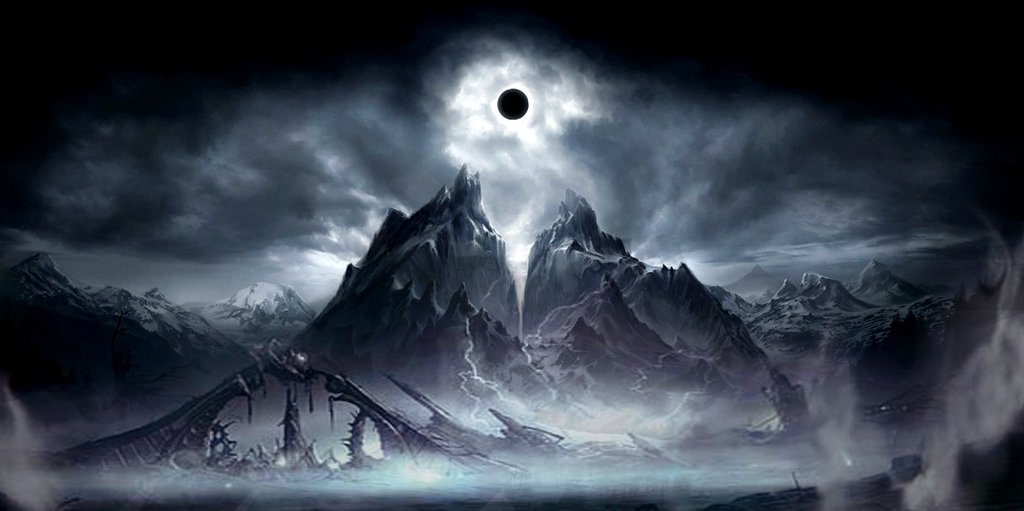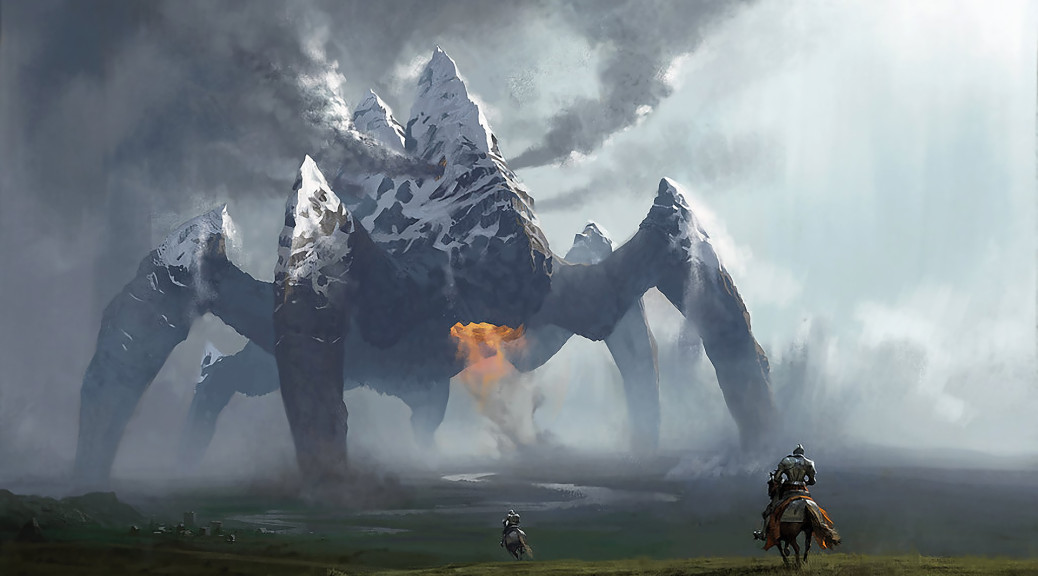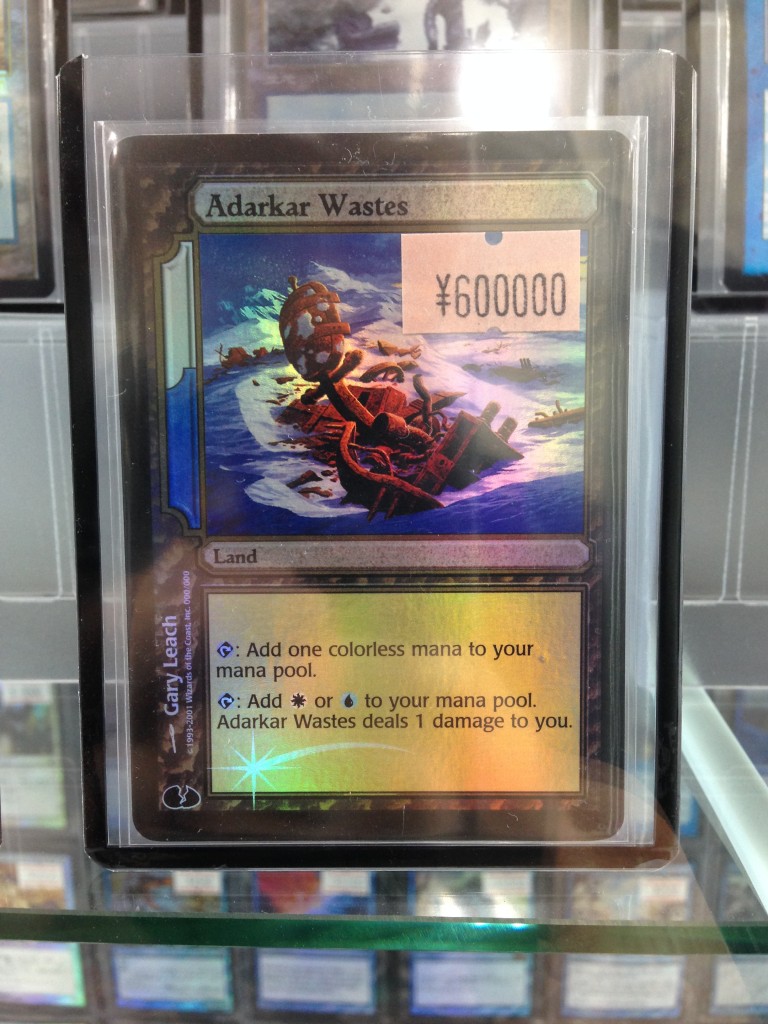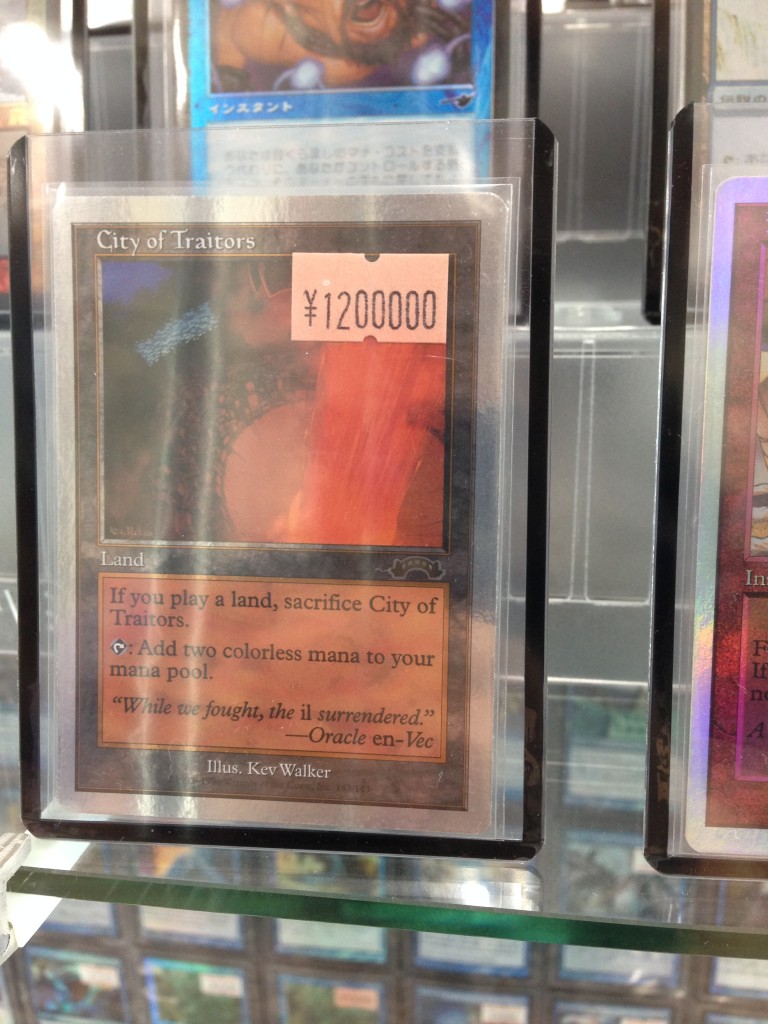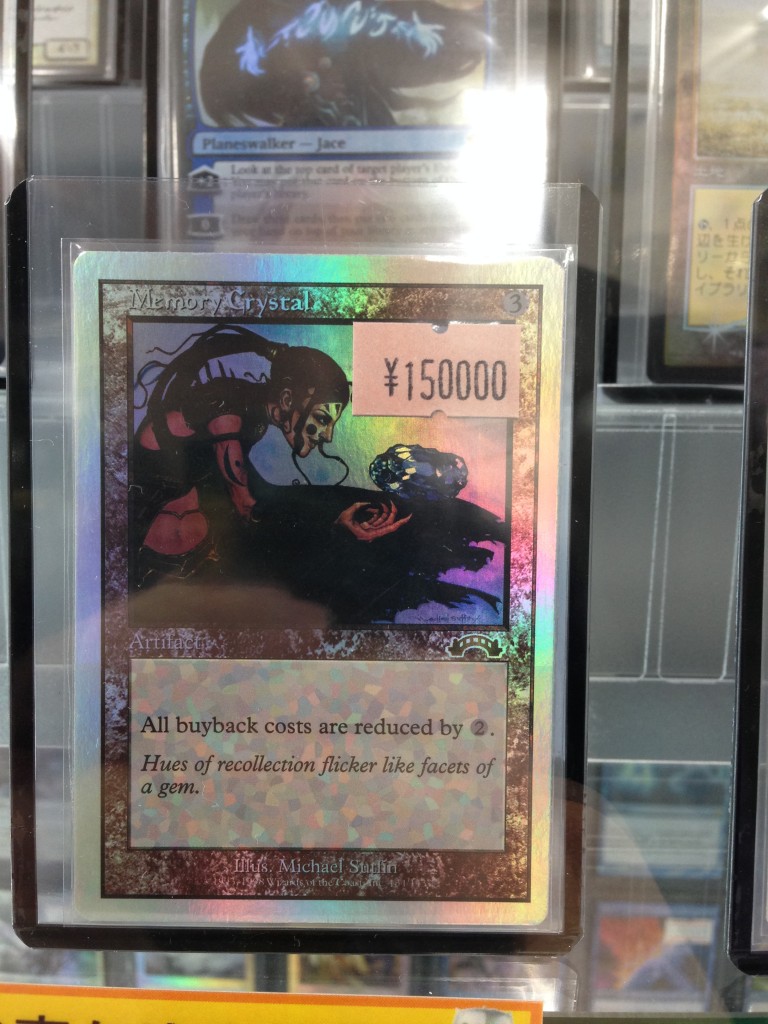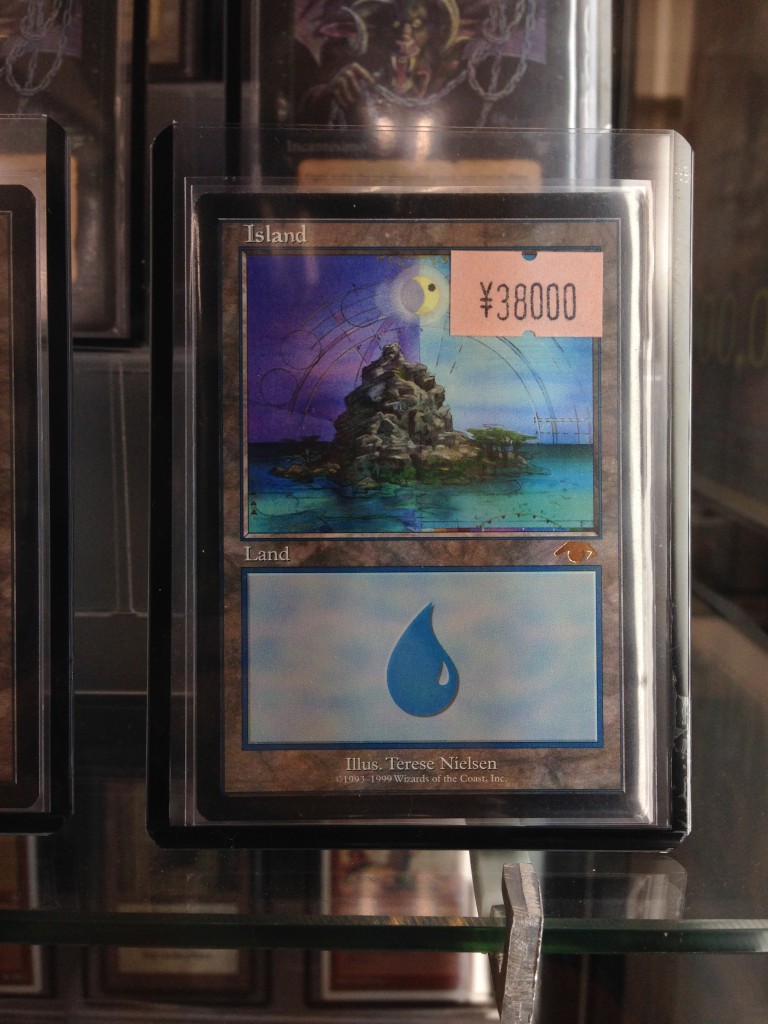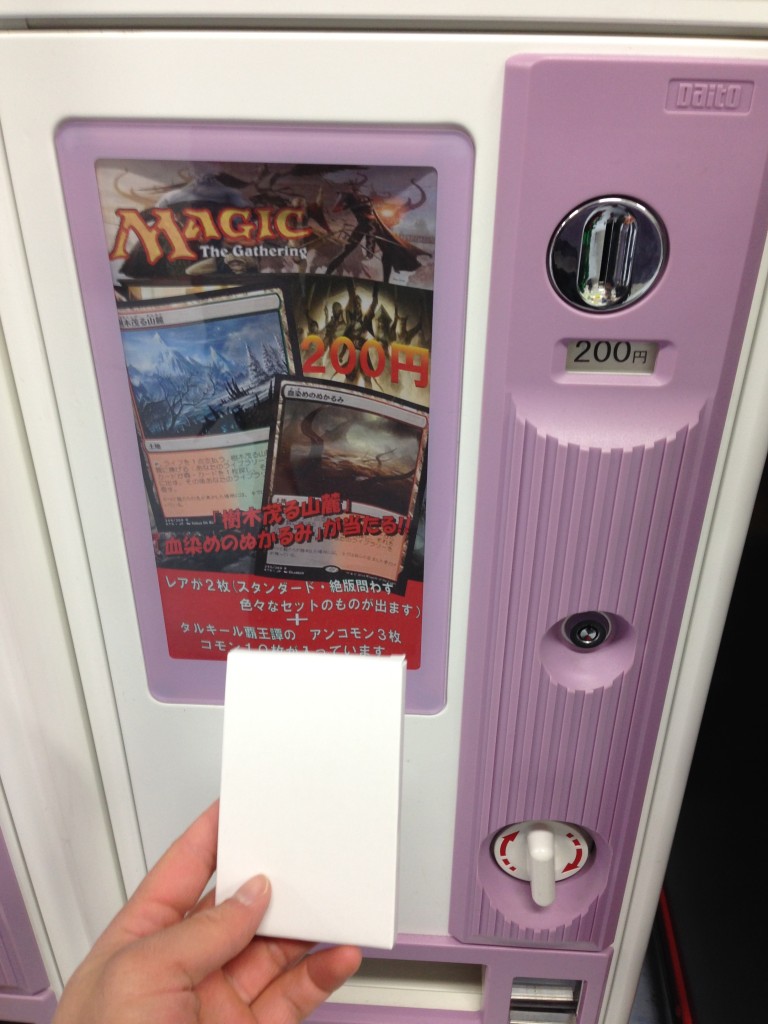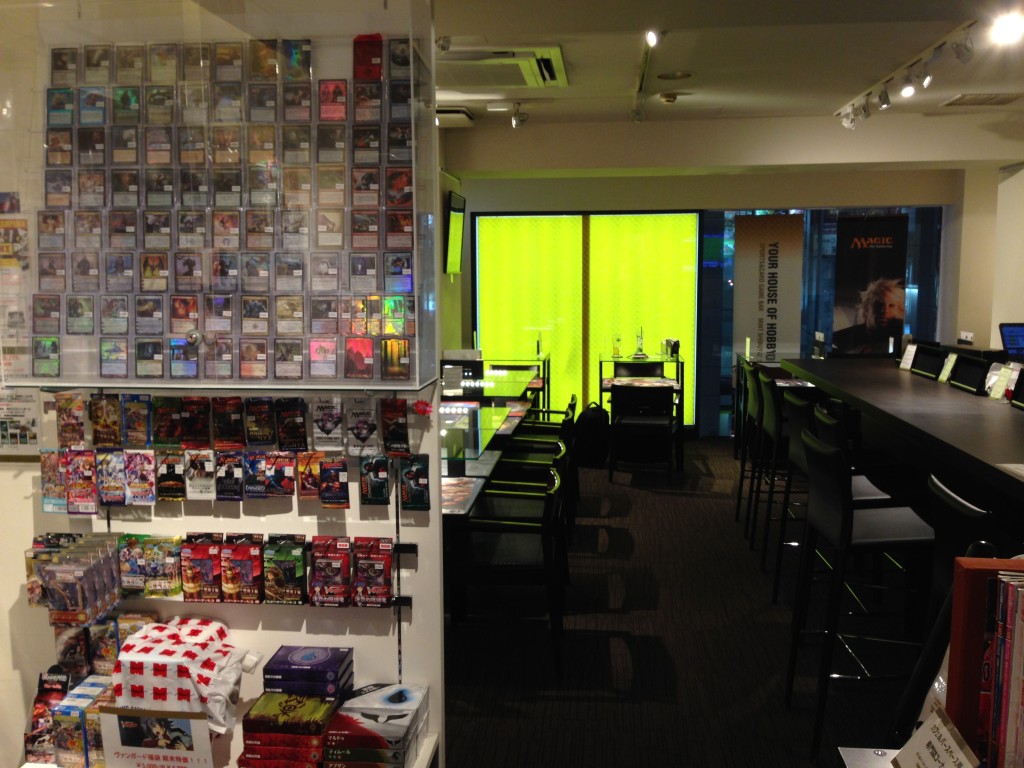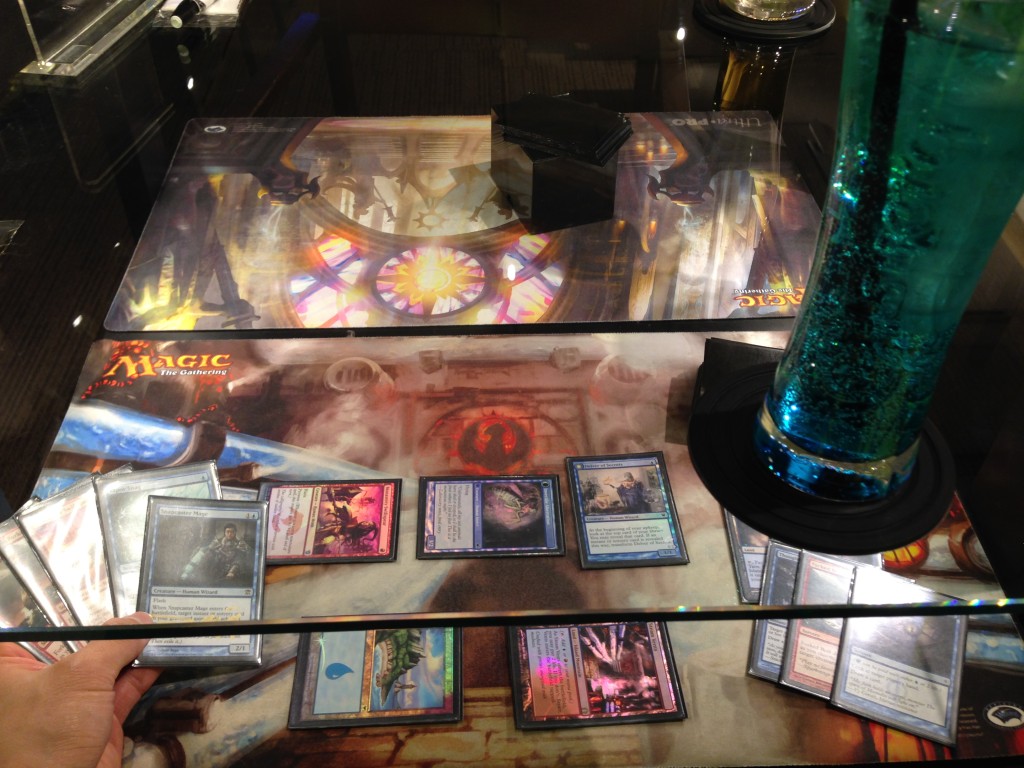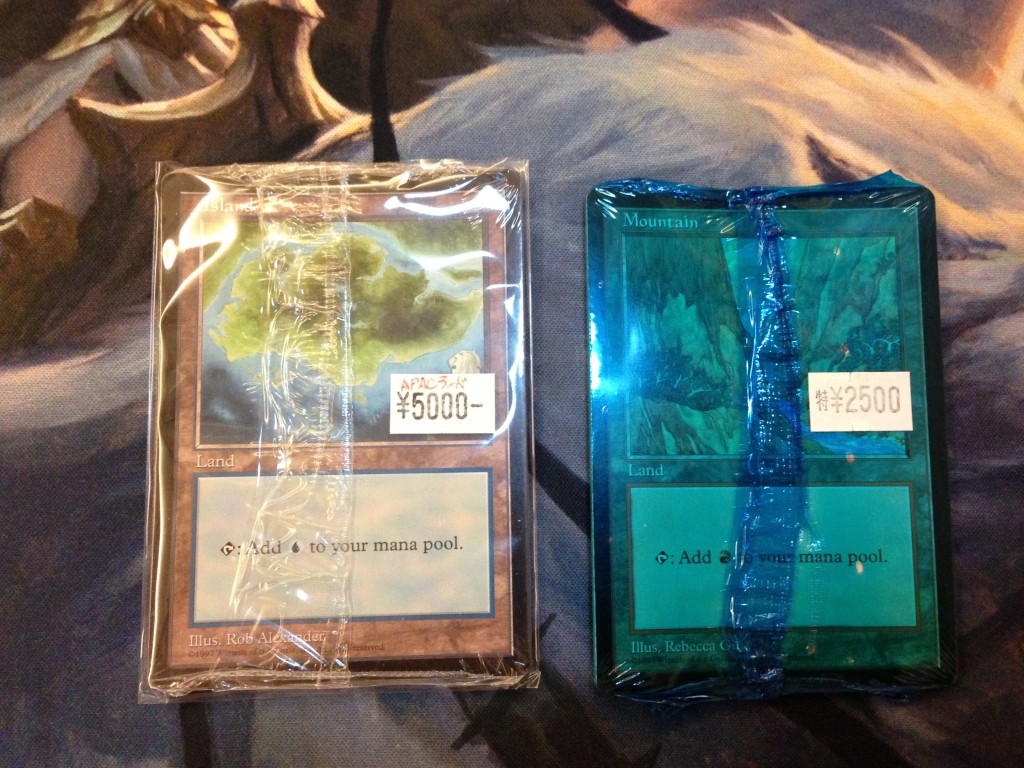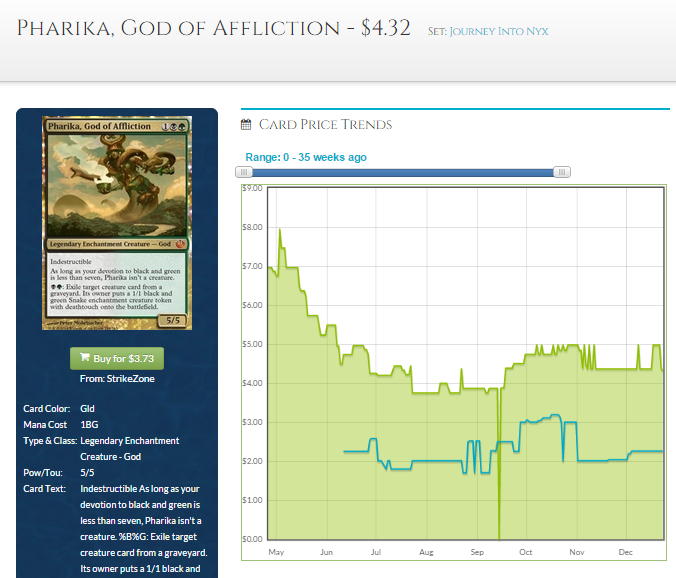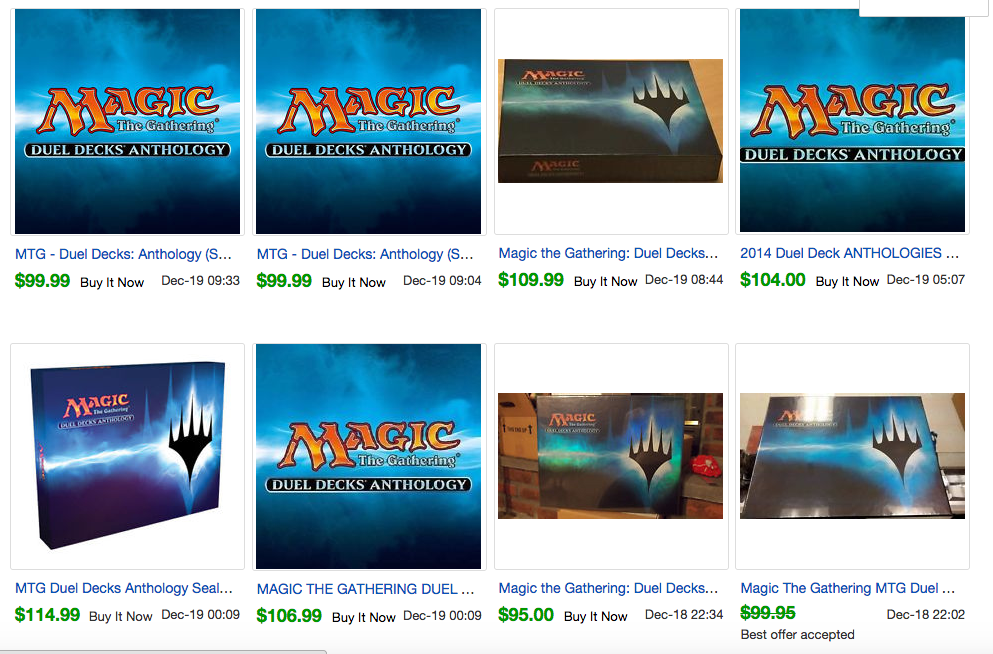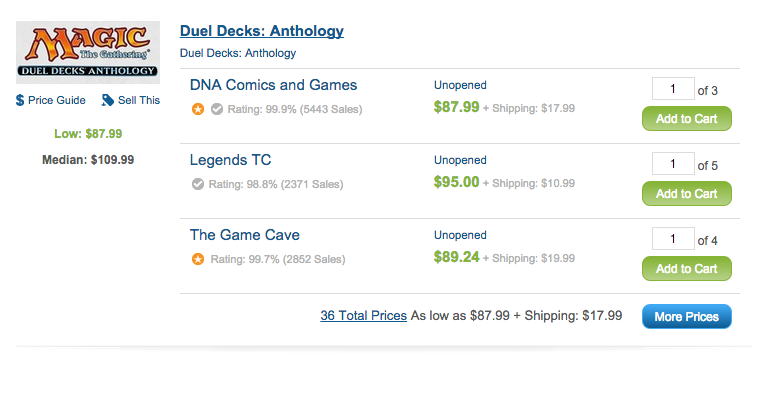By: Travis Allen
An (intentionally) untold number of hours of my life have been spent playing Diablo 2. A full fourteen years after it’s release the game remains a remarkable standard by which all action-RPGs (ARPG) are measured. Nearly every aspect of the game was honed and tweaked and polished to perfection by an incredibly talented Blizzard North. Environments were soaked with flavor, from the damp, muted, chilly English moors the game begins on, to claustrophobic, slimy, maggot-infested tunnels, to gothic fire-infused walkways spanning pits of lava in the depths of hell. Fans of the game are immediately transported back in time upon hearing just the first few chords of the Tristram theme music, which captured the travel-weary, besieged hero sentiment in such a way that a player immediately related to the beleaguered residents of the makeshift town.
Even today the game is arguably still the greatest ARPG ever released to the public. Combat was solid and satisfying, with even a level one character’s swing of the sword resulting in gratifying thwacks on Fallen hide. Spells from every character class were visually enthralling. Torrents of fire spewed from the ground engulfing zombie masses, and barbarians came crashing down amidst enemy hordes from thirty feet in the air, all of which evinced great effect. Each time you lobbed a spinning orb of ice or sent a spiralling spear of bone towards lumbering beasts or scurrying Fetishes, there was a visceral sense of action. Pacing between battles was quick enough that you never fell out of the rhythm, but not so high-strung at all times that you couldn’t appreciate truly large battles when the random monster layout ended up clumping half a map’s worth of foes in a single spot.
What captured the audience in a way nothing really had before, and was partly responsible for the historic success of World of Warcraft, was the game’s itemization and skill system. Item drops were paced in such a way that as a player worked their way through the various acts, upgrades to existing equipment occurred just frequently enough that you knew a new toy wouldn’t be far off, but not so frequent that you didn’t have time to appreciate cool gear before it was obsoleted. At the higher levels of character development items often ceased to be strict upgrades and instead became sidegrades, allowing for customization of play experiences.
While there was certainly a Grade A build for each class, an Abzan Midrange build that was well-known and versatile, the true beauty came from the vast set of options unlocked by the intersection of unique skills and functionally different gear. One of my personal favorites was the BearSorc, a hilarious frankenstein of a character build. By combining a certain set of items with no apparent synergy and dressing up a character that had no business using any of them, the emergent properties were such that you were now wildly powerful and completely unconventional. It was the equivalent of Tin Fins, a group of cards that seem discordant on paper, but is in fact unreasonably powerful in practice. If you’ve ever found yourself wanting a Magic: The Gathering action game, the best one that will probably ever be made already exists, and it’s been around for years.
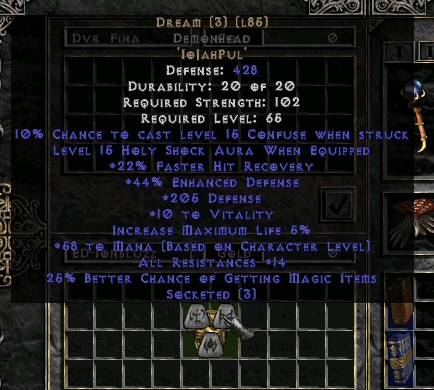
One of the most interesting and engaging aspects of the game was one that grew up from the community entirely organically. A whole economy for powerful items matured as the game progressed, from early days of ubiquitous trading-window hacks to late-stage excessive duping and market crashes. Early on in the game’s lifespan one of the most valuable and universally desired items, the Stone of Jordan, was a key component of the Diablo 2 marketplace. Eventually market forces shifted and items were measured in value based on how many Stones of Jordan they were worth. A cool hat may have been worth one to two SoJs, a well-rolled Stormshield may have been ten or twenty, and a perfect Godfather or Windforce may have commanded a full forty Stones of Jordan.
That was where the market started to break down. When trading items between players, the absolute maximum number of items that could be traded away by one party was forty; the size of the player’s inventory. This became a hindrance as saturation and duping meant that items were worth more and more SoJs. Truly rare and high-end items were worth more than forty SoJs, but there was no safe or reliable way to perform a transaction that involved a greater number than that. One party would be able to completely hose the other, with absolutely zero in-game or customer service repercussions. This left players seeking solutions outside of the trade window.

Aside from the hundreds of sites that sold Diablo 2 gear for cold hard cash, the one trading location that truly thrived was d2jsp. The website still exists for use in other games, although I’m sure the D2 portion is nearly defunct at this point. Like wavedashing in Super Smash Brothers Melee, if you don’t know the name d2jsp, you weren’t playing Diablo 2 at the highest level.
What set d2jsp apart from every other trading solution was that it introduced a flexible currency into the market between players. Normally trading high-end items between players was a nightmare. I may have a near-perfect Breath of the Ancients, but if I’m looking for an Ethereal 2os Crown of the Ages, it’s going to take forever to make that trade. Not only do I have to find someone with an exceedingly rare item, I have to hope they want my sweet sword. d2jsp fixed this by adding “forum gold.”
Forum gold was inherently valueless, with item prices set entirely by the community. It provided a tool for players to trade any item for any other item, simply by turning their half into forum gold, and then paying someone else for their item using forum gold. FG was, and still is, a currency. I would find someone with a huge pile of FG that wanted my sword. I’d give them my sword in the game, and they’d send me however much FG we had agreed it was worth. Then whenever someone was selling an item I wanted on the d2jsp forums, I would pay them the requisite FG and they’d give me the item in-game. It was a bit clunky, and required some level of trust in the people using the system that was violated with some frequency, but it provided a badly needed service to a community with item values that had massive spreads.
Forum gold changed the nature of the game for many, and made items that would otherwise have been completely inaccessible, obtainable. It was invaluable for the average or newer player that wanted to reach the upper stratospheres of items. Just playing through the game a player would occasionally find an item worth a few FG. They would gather up bunches of these items, sell them each for one or two FG, and then find themselves with enough to buy a higher-tier item. It was a reliable method a player could utilize to slowly increment the quality of the gear. No longer were the rarest and best items completely out of reach short of hacking local save files. There was a path, it was clear, and everyone could take it.
I loved d2jsp and forum gold. It was a rich vein for those that understood the system and how to use it. More than just buying things people were selling for too cheap and relisting it, it provided a tool to move unique and high-end gear that otherwise would rot away, while at the same time turning piddly low-level armor into genuinely useful pixels. With time I was able to amass quite a large pile of FG, along with several characters geared to the teeth with some of the best items money could buy. Of course I promptly blew it all on Diablo 3 when that came out some number of years later. In fact, Diablo 3 had an auction house that used real life money whose existence was almost entirely based on the success and necessity of d2jsp for the Diablo 2 community. (The auction house later imploded and was removed by Blizzard, but that’s a whole other topic.)
What does my waxing poetically about Diablo 2 have to do with Magic? There is in fact a great deal of similarity between the item market in D2 and trading MTG cards. Both systems use bartering rather than currency at the player-to-player level. Both require each party to want something from the other. Both result in headaches when one side of the deal is worth 10% more than the other and players are left trying to fill in missing value without using a granular currency like the USD. And like D2, a website has stepped up to fill in a gap between players.
Puca Trade (PT) is still just a Magic trading website, but it’s characteristically different than Deckbox and its ilk. Deckbox works by connecting players based on what cards they want. If we each have something the other wants, Deckbox makes it easy to connect with that individual and facilitate a trade. While it provides for a much deeper pool of players to trade with, it still suffers from the issue that each party needs to be getting something useful to them in order for a trade to be completed. Deckbox isn’t looking to solve this problem, it’s just looking to put so many players in the same pot that it doesn’t come up often.
Puca Trade functions more like d2jsp than Deckbox. I show up and see what cards people are looking for. I don’t attempt to broker a deal between us, though. I don’t browse their Haves list to see if we can make a trade work. Rather, if someone wants a card I have, I just ship it off to them. What I receive in return is not cards, but points. Points function as a currency. As I send real cards off to people, I get their points. Then when I decide I want a card, I use my points to ‘purchase’ that card. (Purchase isn’t exactly the right term, since I’m not going to the market, picking something, and handing the seller points. Rather, I hang a sign on front of my door – “I’d like one Snapcaster, please!” – and someone comes along, slides the Snap through my mail slot, takes the points out of a basket next to the door, and continues on their way.) What Puca Trade does is put a highly divisible middle-man into the trading process, making life easier for people on either side of a deal.
With a system of this nature comes many nuanced opportunities to maximize gains. There aren’t many ways to do something completely wrong, but there are strategies to take that will be sure to help you make the most of your Puca experience. This certainly won’t be an exhaustive list, but it should at least get you on the right path to getting the most bang for your buck, without actually involving any banging or bucks.

One particular aspect of Puca Trade makes it particularly unique, and will be the backdrop for most of our discussion. Card values are not fluid on PT; they are in fact the result of “complex algorithms.” During a real life trade, you and your partner are able to debate the value of cards. Maybe a Snapcaster is $30, maybe it’s $33. There’s a back and forth to decide on a value. On Puca Trade, it’s set in stone. As of writing this, Snapcaster is 3016 points. That value can and will change, but if you’re trading or picking up a Snapcaster today, it’s worth 3016 points. 99% of trades will take place with the pre-determined card values. (There are ways to circumvent this, and don’t worry – it’s not against the rules to do so.)
The fact that card values are set automatically is neither good nor bad, it just is. It’s important to be aware of this fact though, because it will dictate how we approach trading within the system. Values set through heuristics and algorithms will occasionally be “wrong,” in the way that any monetary value assigned to an item without intrinsic value can be wrong. Part of our strategy will be looking to capitalize on gaps such as this.
Know What You Want
The first thing you need to do when coming in is understand why you’re here. What are you looking to get out of the system?
The actual transfer of cardboard on PT is not particularly expedient. As a new user you’ll start with about five bucks worth of points. In order to get enough to pick up real cards, you’ll need to add your cards to the system, wait until you find someone who needs them, get them in the mail, and wait for them to receive them. From the day that you sign up to the first time your account is credited points from another user could easily be over a week. Then you’ve got to wait for someone who has cards you want to agree to ship them to you, then actually ship them, then get them in the mail…
It’s a slow process. Our takeaway then is that you shouldn’t be using PT to chase down Standard staples you need for FNM next week. PT is best when used for longer-term goals, such as finding the last few pieces you need for a Modern deck, slowly assembling a Legacy list, cards to fill in holes in your collection, and of course EDH components.
This isn’t to say you can’t use PT to acquire Standard cards. Just realize that it’s generally not going to happen quickly.
Know What You Have
While the actual transfer of cardboard can be a bit time consuming, the rate at which trades happen is blindingly fast. We’ll talk about this in a minute, but the lead-in is that you need to know exactly what product you’re working with. Go through your trade binder and identify the cards you’d like to trade. (Instead of blindly adding them to your collection, make sure you check what PT thinks their value is first. Most of the time PT is just fine and you should go ahead and add it. There are other times this isn’t the case, as we’ll see below.)

Only add cards to your Haves that you are 100% willing to trade at their given value. If there’s a card you’re not sure you want to get rid of, or if its PT value seems a little low, skip it for now. The reason for this is that you need to be able to pull the trigger to send a card within seconds of someone needing it. If you have to hesitate and question whether it’s a card you want to get rid of, you’ll miss the opportunity to send. When someone wants a card you have, you need to be lightning quick on the ‘Send Card’ button.
Part of maintaining this list will be removing cards from your Haves if you trade them off locally. If you’re only working with a handful of cards this isn’t hard to keep up with. If you find yourself with thirty or more cards on your PT list though, you may want to just pull them out of your binder and leave them at your desk so that you’re always 100% on knowing exactly what you have. You don’t want to see a Bloodghast pop up as a possible trade, and then wonder if you traded your last one at SCG last weekend and have to dig up your binder to check. By the time you have your answer, someone else will have already committed to send them the card and the opportunity is gone.
No Casuals
Knowing without hesitation what cards you have to trade away is key because of how quickly trading works. Anyone that wants a reasonably available, common-place card is going to have their order filled within seconds. The list of people that want Alpha Veteran Bodyguard will have names on it and is not going to change very often, but the list of people that want Mantis Rider is nearly always empty. Why is this? As soon as someone both A. wants Mantis Rider and B. has the points to cover it, someone agrees to send almost immediately. There are way more people looking to trade away Mantis Rider than there are people looking to pick it up, so trades happen lightning fast.
The flip side of this, and what strikes most new users, is that most of the time nobody wants your cards. Or more specifically, nobody fulfills the conditions of wanting your cards and also being able to afford them. Out of the 86,400 seconds in a day, there may be a grand total of twenty to sixty of them wherein you have the opportunity to send someone a card. You need to be paying attention when this happens, but how do you manage that?
I’ve been using Auto Refresh for Chrome, and I’m a big fan. It’s simple enough. Tell it how often to refresh the page, in this case the ‘Send Cards’ page, and then stick the window on another monitor where you can keep your eye on it. I usually do mine for about 20s or so. All day long it just sits over there, constantly refreshing, and as soon as a match comes up I’m mashing ‘Send Card.’ Like I said, prepare for long periods of downtime and then a sudden flurry of activity while you rush to send the card.
Other tools exist to help manage the tracking of trade opportunity changes. There are other apps that will monitor when the text on the page changes, which you can use to track the “Total: 0” text. I’m sure there are other tools as well. I haven’t dived too deep into this well myself, but there is certainly more out there to refine the process. These would be especially helpful if you don’t have the luxury of multiple monitors.
Use Auto-Matching. Also don’t.
When you’re looking at the page for sending cards, you’ll notice a toggle for auto-matching. When you turn this on, it will only show you cards people are looking for that are in your Haves. This page is what will nearly always be empty. When you’ve left the PT page to the side to refresh all day long while you’re working, you’ll want this to be on so that you only see valid trades.
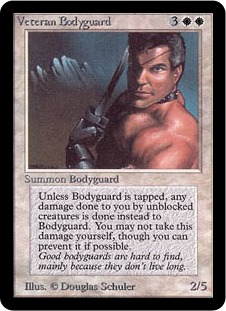
We can definitely make use of the list when auto-matching is off as well though. I like to turn it off and then sort by points, highest to lowest. This will show you the most expensive cards people can currently afford in descending order. The first thing you’ll notice is just how many people want Alpha and Beta cards. Apparently a lot of people are trying to put together sets of those. (We’ll get to A/B cards later.)
What you’re viewing here is the list of cards people want, can afford, and haven’t been sent yet. This is interesting to us because we’re seeing the unserved market. Here are all the cards that are desired that aren’t being sent. Once you get past the slew of A/B and Legends stuff, you’ll see all sorts of odds and ends. It’s important to pay attention to this stuff – this tells you what to look out for when you’re trading at your LGS. There’s always a bunch of Snapcasters on the list. Shocklands are common. Modern foils like Spell Snare and Serum Visions show up. The new fetches, especially Flooded Strand, seem to be popular. Geist of Saint Traft has been underserved lately.
If you’ve been at the Magic grind for awhile like I have, you’ve probably got not only one trade binder, but a bunch, filled with all sorts of odds and ends across the spectrum. Browsing this list you may see cards that make you think “hmm, I think have one of those around.” You’ll dig around, find it, and agree to send it. When your collection gets big enough, it’s unlikely everything you’re willing to trade will make it onto your PT Haves list.
In addition to looking for possible trades, pay attention to not only what you’re seeing, but what you’re not seeing. Notice that there are nearly no Siege Rhinos. Checking the page for Rhino confirms that aside from two foil copies, nobody in the system is looking for and can afford that card right now. If you notice an absence of something, look up the card and you can see how many people in the system have it on their wants list, regardless of whether they can afford it.
Seeing what cards are heavily represented on that list, and therefore aren’t being sent out, may be of use to you in another way as well. If fifteen different people are looking for Snapcasters but they aren’t receiving them, perhaps there’s a reason why. When you see lots of copies of the same card not sent, that should be a flag that there may be a reason nobody is sending them. If you aren’t sure why nobody will send the card out, it may be time to do some research.
Don’t Send Small Cards
The bare minimum in cost to send a card is the price of an envelope and stamp, which is probably in the neighborhood of $.50 to $.75. Keep this in mind when you’re deciding what to trade. I have a stack of Lotus Petals, but I’m not trading them on PT. At $3 each, the postage cost is about 18% of the value of what’s inside. That is way, way too high. If you can send them as a playset sure, it’s great. It’s not worth it one at a time though. Perhaps some of the guys that grind the heck out of PT can offer suggestions for how to profitably move smaller-value cards of this nature.
In general, I won’t send anything worth less than 500 points, or about $5. That keeps the value of the stamp relative to the card inside to under 10% or so. Even that’s not a ratio I’m happy with. I really shoot to move cards in the $10 to $20 range. Once a card is around $10 the cost of postage relative to the points you’re earning is much better, and under $20 means that you don’t need to worry about using additional security measures. Once a package is over $20, I’m putting it in a bubble mailer and using tracking through PayPal’s services, which puts me at about $2.50 in shipping with the cost of the mailer. Between $10 and $20 is the sweet spot then, as your postage:points ratio is optimum. (You get back into a good ratio once the package gets high enough in value, say about $70+. That will happen far less often than the $10-$20 trades though.)
Send Weird Cards
One of the biggest reasons to use PT is that you can get full value for cards that are otherwise very difficult to find buyers for. Foil Kaervek the Merciless is worth $8 or $9, but how often do you think people are going to want this type of card from you at your local store? That’s the type of card that has real value, and a real market, but there may not be a warm body within forty miles of you that actually wants the card. PT is an excellent place to out these types of cards, especially because many people are on PT with the intent of filling out EDH decks. The nature of PT means that EDH foils are a key pillar of the economy. All those cards in your binder that are worth more money than anyone ever expects but nobody ever wants to trade for? Those are perfect PT fodder.
Climb the Ladder
In general you want to be moving up the chain, turning lots of smaller and mid-level cards into bigger things. Think things like Vendilion Clique, Tarmogoyf, and big foils. In general more expensive cards are more expensive for a reason – they’re more useful. And more useful cards leave people’s personal binders less often. Relative to cheaper cards, they’re harder to find in trade binders and harder to justify buying with cash. Part of the beauty of PT is that it allows you to take this wide mess of lower-value cards and easily turn that into one or two solid pieces of cardboard that would otherwise be very challenging trade in real life. Consider two scenarios at a GP. You have a binder full of random $5-$20 cards and you want to trade for a Tarmogoyf, or you have a Tarmogoyf and you want to trade for a bunch of random $5-$20 cards. Your day is going to be a lot easier if you have the Tarmogoyf.
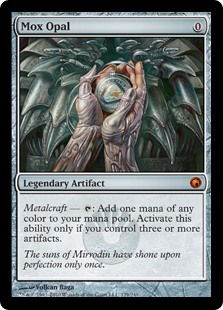
This isn’t to say you can’t pick up small stuff on PT. I traded for a slew of cards between $4-$10, and I traded away stuff as big as Mox Opals. The key is that those trades were for personal satisfaction; cards I really wanted for EDH. I framed it in my head as such: in real life, would I be happy trading card X for all these foils? Frequently the answer was yes. I had a spare Crucible of Worlds, so I shipped it on PT, and the points probably got me three or four cards at least. I decided I would make that same trade in real life, so I was ok turning the Crucible into points. If you’re looking at a card in your binder, and looking at the cards on your Want list, and thinking that you wouldn’t trade the card in your hand for the cards on the screen, just don’t send it. There’s strategy in trading up the chain, but it’s ultimately a personal decision.
Manage Your Team
Don’t just shove every card you’re eventually hoping to trade for onto your Wants list or you may find yourself never coming close to picking up the bigger cards you want. As you rack up points, cards that you can currently afford will show up as potential trades in the system. If you have twenty cards under 1,000 points on your Want list, you’re going to end up getting all twenty of them before you get a single 3,000 point card. Because you only receive points when the individual on the other end confirms he got your cards, your points will roll in sporadically. You’ll keep breaking the 1,000 point threshold, someone will send you one of those twenty cards, and you’ll be right back down to thirty-five points, no closer to that 3,000 point card.
If there’s fifty cards you’re hoping to pick up through PT, have an idea of priority. If there’s one or two you really need before all the others, put only those on your list. Once you have enough points for those two and you receive them, you can start adding the other, less important things to your Wants. Keep in mind too that expensive cards often take longer to find matches for. When I started I put around thirty or forty cards on my Wants list. While there were cards on my list under $20 I couldn’t keep more than 1,000 points in my account. Now that I mostly only need $40+ cards, they’ve been sitting there for a week, and who knows how long it will take. A foil Stoneforge Mystic may be your highest priority want, but keep in mind that you could possibly pick up every other card on your list before you ever would have gotten someone to send you the SFM.
The silver level membership is useful for this, as it adds a Watch list. This particular feature is handy, although certainly replaceable outside of the system. Silver also adds the ability to send points, which we’ll talk about later.
Death to the Hoard
Always have a plan for your points. Avoid having a stockpile of points with nothing you plan on spending them on. A situation where you have thousands or even tens of thousands of points and no cards on your Want list is exactly the situation you want to avoid.
Our reason for avoiding this is inflation. Every time a new account is created, there’s 500 free points to be had just by doing things like filling out your profile. Adding 500 points per person isn’t bad, but it isn’t the whole story. Puca Trade also sells points for cash, which has the potential to add huge sums of points over the long run. I honestly have no idea how often people buy points directly from PT, but if my Twitter feed is indication, I’d bet at least 3-5% of users, with possibly up to 10-15%, have and/or will continue to buy points from the site. 
Introduction of these points to the system still isn’t the biggest issue. Inflation in a system such as this stems from the fact that there’s no outlet. Once points are in the system, that’s it. They’re there. Points added to the system never leave the system. If every month PT is adding thousands of points to the market, but they’re never leaving, the average value of a point is decreasing over time. Theoretically, if this trajectory were to continue unaltered, five years from now points would be worth considerably less than they are today. Therefore, it’s unwise to keep part of your collection’s value tied up in a currency that currently is facing the possibility of inflation.
There are three caveats to this warning. The first is that you shouldn’t worry about this in the short to mid term. Looking to save your way up to a dual land or a Workshop? Go for it. There’s nothing wrong with saving up for a big card. Inflation doesn’t happen overnight, and it happens gradually. You aren’t going to lose money spending a few months building up a bank account of 30,000 points.
The second is that this is a risk/reward caution. Remember, we’re all striving to be Bayesians. It’s entirely possible that for some reason Puca points rise in value. If that were to happen, you’d obviously want to have as many points as you could. However, it’s far more likely that they lose value. Think of it this way: if you cash your excess points out into shocklands, it’s a very safe investment. You don’t need to worry about those devaluing anytime soon. If you instead hold the Puca points, there’s a small chance the points could gain value, but a much larger chance that the points lose value. So why increase your risk exposure by having a volatile asset with low reward when you could just put your collection value into something much more sturdy?
Third, I’m sure the guys over at PT are aware of this facet of their model. After asking them about it they tell me that currently there still aren’t enough points in the system based on whatever mathemagic they use, so they’re allowing more to enter. If it reaches a point where inflation starts to creep up, they may introduce point sinks to help pull excess out of the system. A bit of guidance from an economist may be all it takes to safeguard Puca Trade against concerns of this type. Even still, I point you back to the second paragraph – why take a risk that you don’t need to?
Don’t Bother With Short-Term Specs
Do you know how many people wanted Chalice of the Void while it was still 500-600 points on PT but spiking to over $10 on TCG? A lot more than were shipping it. Picking up spec targets is fine, but they need to be long burns. Nothing that you expect to spike in under two months.
Work the Margins
Before adding a card to your PT Haves, make sure you check out it’s market value here on MTGPrice. The cards with wide spreads between retail sales and Puca points are what you want to be sending away, while the cards with real tight margins are what you want to be receiving. Let’s see an example.
ROE Emrakul, the Aeons Torn
TCG Copies: $35-40
Puca Points: 4,806
RAV Foil Doubling Season
TCG Copies: $35-$40
Puca Points: 3,376
If you have the Emrakul, you can trade him away on PT for 4,806 points. You can then use 3,376 of those points to pick up a Doubling season, earning you a cool 1,430 points in the process. Meanwhile, you can head to TCGP and pay the same price for both copies of the cards. Theoretically if you were going to buy a Doubling Season from TCG, you’d be better off buying an Emrakul instead, trading it away on PT, then using those points to pick up a Season.
This isn’t a perfect example. Emrakul shows up as $54 on MTGPrice, while that foil Doubling Season is only $40, so there’s your 1,400 point gap. For the guy with cold hard cash though, they’re the same price. (This is a good example of how fluid and unreliable our concept of worth is.)
This does illustrate an important concept though: be aware of the spreads between the rest of the market and PT. Your goal is to put yourself on the ride side of every transaction. It won’t always happen, but it will help inform you what is worth listing on PT and what isn’t. There’s a reason there are never less than a few playsets of Snapcaster Mage in demand. The PT value is so close to the cash value that for many people it’s not worth sending the card out. Why take 3,000 points when you could have $27?
Seller Beware
Currently, foil Slobad, Goblin Tinkerer is 339 points. Meanwhile there’s a single NM copy on TCGP and it’s $17. Slobad spiked after Daretti emerged as the most popular Commander 2014 deck, but Puca’s algorithms haven’t caught up yet. For awhile foil 7th City of Brass was around 400 points, which is $4, while copies are actually worth about $100. When you’re plugging cards into your Haves, especially foils, do yourself a favor and be sure that PT is up-to-date on prices. You don’t want to actually send a $75 card for seven bucks worth of points.
Alpha Mail
When browsing the list of all possible trades, it’s readily apparent that Alpha and Beta cards are heavily represented. People all over the system are trying to put together sets (good luck) and are using PT to make it happen.
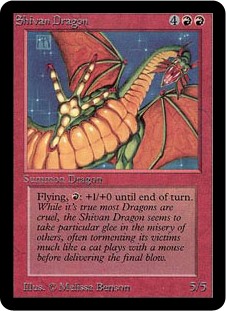
Alpha and Beta cards exist solely as collector’s items, which makes their pricing more complicated and nuanced than everyday Standard staples. There’s an entire article in discussing how the pricing model for collector’s items behaves differently than competitive staples, but the long and short of it is that A/B cards have a much wider spread between a site that uses retail prices like PT and a consumer-to-consumer site like eBay. Snapcaster Mage may run you $30 on any given MTG retail website like CFB or SCG, and in a player-to-player sale the price will likely be at least $25. On the flip side of that, while you may pay $125 retail for a Veteran Bodyguard, on a site like eBay you’ll pay less than $100.
With such disparate pricing across different markets, A/B cards are great for adding a big volume of points to your account quickly. Picking them up for secondary market prices and then shipping them on PT for retail-equivalent points is a great profit.
But wait, we can do even better. Imagine the guy with an Alpha Veteran Bodyguard in his trade binder. How long do you think that’s been sitting there? Given how long I’ve had my two Beta Dark Rituals front and center, probably a long while. There’s a definite market for these types of cards, but the buyers are spread out and not necessarily the type of person to swap binders at FNM. Even if someone does happen to seem interested, the retail price tag my scare them off. That’s where we come in.
Chances are the guy with the Bodyguard would like to move the card. By making aggressive trade offers, you may be able to pick it up for a lot less than the sticker price. Make offers with Standard staples that you know are popular. You may be surprised what deals people are willing to make on product like this. Try starting with three Flooded Strands, for instance. That’s $60 in grade-A Standard stock that’s not going to be hard to move. It’s solid, reliable, popular, useful cardboard. This is going to be appealing to someone that’s watched that Bodyguard develop wrinkles it’s been in his binder so long. It may require some haggling, and not everyone will go for it, but you may be surprised how willing people are to trade expensive, collector’s-only cards for less value in useful Standard cards.
A playset of Strands is 7,460 points as of 12/21/14. If you trade the set of Strands for the Bodyguard, you can then ship the Bodyguard for 11,249 points, earning you 3,789 more points – nearly $40! Living the dream on A/B cards will be cutting a profit at both ends. Pick them up in trade for below average rates by offering quality Standard cards, and then ship them for maximum retail value in the Puca system. It’s unlikely these opportunities will come up often, as NM Alpha and Beta doesn’t show up in binders every day, but keep it in mind as you browse, and remember that prices are much more flexible when bartering for collector’s material.
A Silver Level You Can Buy
Multiple account levels exist within PT, with the differences listed here. There’s a big jump from common to uncommon (silver), and a much smaller jump from silver to gold. Upgrading from silver to gold doesn’t give you much in the way of lasting benefits, especially when you consider that card price history and trends are readily available right here at MTGPrice for free. That leaves sending cards as gifts (pfft), higher priority visibility, and increased referral bonuses. Unless you’re working the referral bonus game, that basically leaves the higher priority visibility, which I’m pretty sure isn’t worth an extra $5 a month.

Jumping from a free account to silver is definitely worth considering though. There are a lot of added features that can matter, such as the Watch list, receiving foils, and list exporting. While these are useful, what we’re most interested in at this level is the sending of points. Being able to transfer points between users opens up a lot of options in wheeling and dealing that wouldn’t exist otherwise.
Perhaps the most common use of this feature is the sending of non-NM cards. Let’s say I’m browsing the list of cards people are looking for and I see someone needs a Reset. I have one, but it’s a bit edgeworn. I can’t send it as NM, but I’d still like to ship it for points. I can message the guy who needs the card and ask him if he’d like an SP copy. If the NM copy is 1799 points, perhaps we negotiate to a price of 1600 points. I click the “send card” button and ship him an SP Reset. Once he receives the card he completes the trade, and I get 1799 points. I then use my ‘Send Points’ functionality to send him the difference of 199 points. Without the ability to send points like this, I would never be able to ship SP cards without using external reimbursement, like PayPal or shipping him additional cards with the Reset, which are both messy options.
Sending points also opens up the door to cutting deals. If User A is twenty or thirty points short of affording a 2,000 point card, User B can just send him the card and User A can transfer his 1,980 points to User B. This allows for transactions to occur that otherwise wouldn’t have happened, because User A’s desire for the card never would have shown up on the ‘Send Cards’ screen.
On that note, don’t be afraid to negotiate. I’ve already worked out a few deals where I agreed to pay less points than PT assigned a card. I felt PT was asking too much for something, I told my trade partner what I thought was a reasonable number, and he agreed. Everyone’s happy. Negotiating on cards comes up most often on foreign language product.
Game On
I upgraded my account to silver simply because I wanted to trade for foils, and I don’t mind paying the yearly fee, but there’s a way to game this if you so desire. You need silver to trade for foils, but you can trade them away without it. A free account has full functionality when it comes to shipping cards. If you know there are several foil cards you need, make a note of their total value. While your account is free, keep sending cards and increasing your bankroll. Once you’ve got enough points to cover all the foils you need, buy a single month of silver. Ideally, you’ll pick all of them up within that single month. Now instead of having silver for two or three months and not taking full advantage of it, because you have to spend weeks shipping cards and earning points, you only need to pay for it for a month. If you’re only looking for a specific handful of cards and not continued usage of the service, it’s a good way to save yourself a few months of subscription fees.
Timing is Everything
Cards will pop up on your send page when people have enough points to cover it. People earn those points when someone they send a card to confirms that they received the card. People tend to check their mail when they get home from work – between 5pm and 9pm. This means that the most lucrative times to watch PT are the evening hours. If you’re looking to send as many cards as possible, the times when people are getting home from work and opening their mail are exactly when you want to be watching like a hawk. A lot more people are opening their mail and sitting down to the computer at 7pm than they are at 3am or Sunday at noon.
Whew! That was a lot of strategy. I hope you find some of it useful. Good luck trading!
